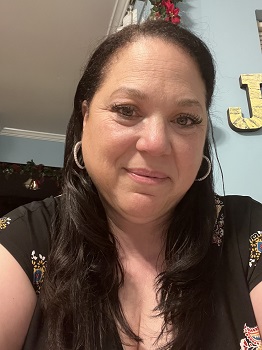
Veronica Treadwell, LMSW, currently holds both a Bachelor's and Master's of Social Work degree from the University at Buffalo. She specializes in Indian Child Welfare including Community and Program Development, and is a tribally enrolled member of the Unkechaug Nation and the daughter of the late Chief Lone Otter, author and tribal Historian. With over 30 years of experience in the human services field and working with diverse populations, Veronica, continues to follow in her father’s footsteps. Through her dedication and passion, she strives toward the uplifting of her people via program development and implementation to improve community education, housing, and health-related issues, particularly among low-income Native American families. Veronica’s past projects include collaborations with the University at Stony Brook’s School of Social Welfare and New York Community Trust on a Language Revitalization Initiative. She acted as the Unkechaug Nation's Fiscal Consultant for the New York State Community Block Grant. In her spare time, she is a tribal Emergency Manager with the New York State Emergency Management Office. Veronica also sits on the Prestigious Boards of the Center for Social Justice and Human Understanding as Board Chair and the Unkechaug Nation Community Development Corporation.
The Unkechaug Nations, People of the Turtle
The Unkechaug people of today are descendants of the original people of Long Island, and approximately half live on the Poospatuck Reservation on the southern shore just west of Moriches. These are the People of the Turtle, an animal sacred in their folklore and the central image of the Unkechaug Nations flag.
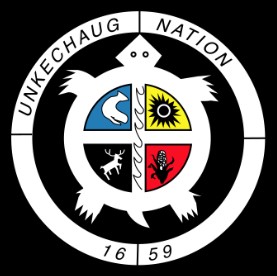
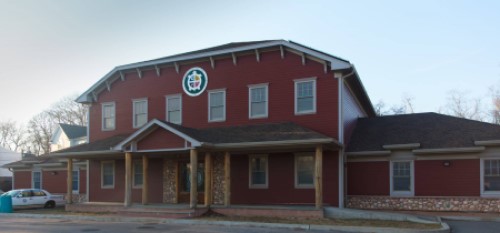
Before European settlers arrived, the Unkechaug resided across thousands of acres on southern Long Island, living off the bounty of the land and the ocean. Today, the reservation in Poospatuck is 55 acres, reduced over time without tribal consent or state legislative approvals from the original 17th century agreement size of 1500 acres. Housing for their tribe members is a concern, as they have population growth above the national average and a lack of land.
Health concerns for the people of the Unkechaug Nations include diabetes, depression, and asthma - all three of which are found in higher rates than the national average. In a 2008 assessment, their asthma incidence was rated at 3 times the national average, which could be related to inadequate housing, exposure to mold and kerosene heating, and living on the water.
Culture and History
This Tribes of Long Island Knowledgebase created by Jeremy Native, a Shinnecock artist, is a wonderful archive of the life, culture, and history of the Long Island tribes, including the Unkechaug.
They were the first creators of wampum, beads crafted from quahog clam and whelk shells that were used as a currency between indigenous peoples and as a ceremonial symbol, long before European colonists arrived. The Unkechaug still make wampum, and it is prized by other indigenous people and collectors for its quality and excellence.



Digitally altered image National Museum of the American Indian. Wampum belt. Artist: Lydia Wallace-Chavez (Lydia Chavez), Unkechaug/Kainai Blackfoot (Kainah/Blood), 2005
People of the Turtle, based on the story as told by Chief Donald Lone Otter Treadwell
Animated short by 13-year-old Sára Jékely, narrated by Veronica Treadwell.
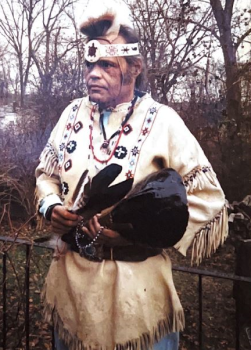
Chief Donald Lone Otter Treadwell is so far the only member of the Unkechaug Nation to write of his people in My People, The Unkechaug: The Story of a Long Island Indian Tribe. Kiva Monograph Series No. 8. De Kiva, Amsterdam. His book is currently out of print, but is planned for a reprint.
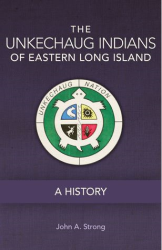 John Strong, retired Professor Emeritus of History and American Studies at Long Island University, documented Unkechaug tribal histories in this respected book The Unkechaug Indians of Eastern Long Island: A History.
John Strong, retired Professor Emeritus of History and American Studies at Long Island University, documented Unkechaug tribal histories in this respected book The Unkechaug Indians of Eastern Long Island: A History.
Reclaiming and Rebuilding the Language of of the Unkechaug
Veronica Treadwell has been working for decades alongside indigenous scholars, tribe members, and linguists on the rebuilding of her native language. Much of these languages were lost due to the United States' brutal practice of assimilating Unkechaug and other indigenous people into European-based culture, and punishing the speaking of native languages. Indigenous children were removed from their families and taken to abusive "boarding schools", starting in the later 1800's, and forced to communicate only in English and to renounce their culture. This was one tragic aspect of the policy of "Kill the Indian in him, and save the man", as described by American military officer and founder of one such school, Richard Henry Pratt.
Stony Brook University Algonquin Revitalization Project. Members of SBU's Department of Linguistics and leaders from the Native American nations of Eastern Long Island — Montaukett, Shinnecock, and Unkechaug — have been working to revitalize their Algonquian languages, which have not been spoken for many generations. These researchers have pulled from other tribal languages with dialects similar to Unkechaug, such as Wampanog, Lenape, Montaukk, and Abenaki as a resource. Amazingly, Unkechaug Chief Harry Wallace came into possession of tape reels with hours of people speaking western Abenaki, which Ms. Treadwell transferred onto CDs for study in 2006. Today, the Long Island school district of Center Moriches offers a Regents-level course on the Unkechaug language.

Digital reproduction of the vocabulary of the Unquachog Indian - Thomas Jefferson
During a visit to Long Island in 1791, Thomas Jefferson met with two Unkechaug (also Unquachog) women and transcribed their words into this valuable document. A more legible list can be found at Vocabulary of the Unquachog Indian - Thomas Jefferson.
